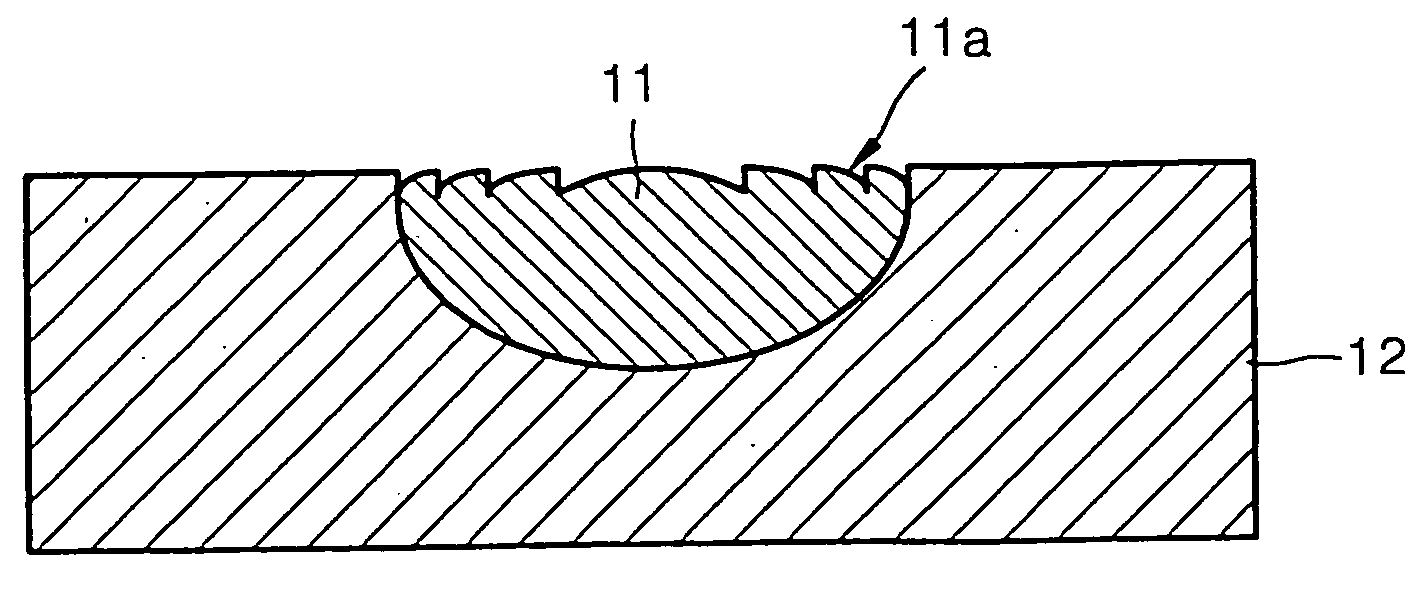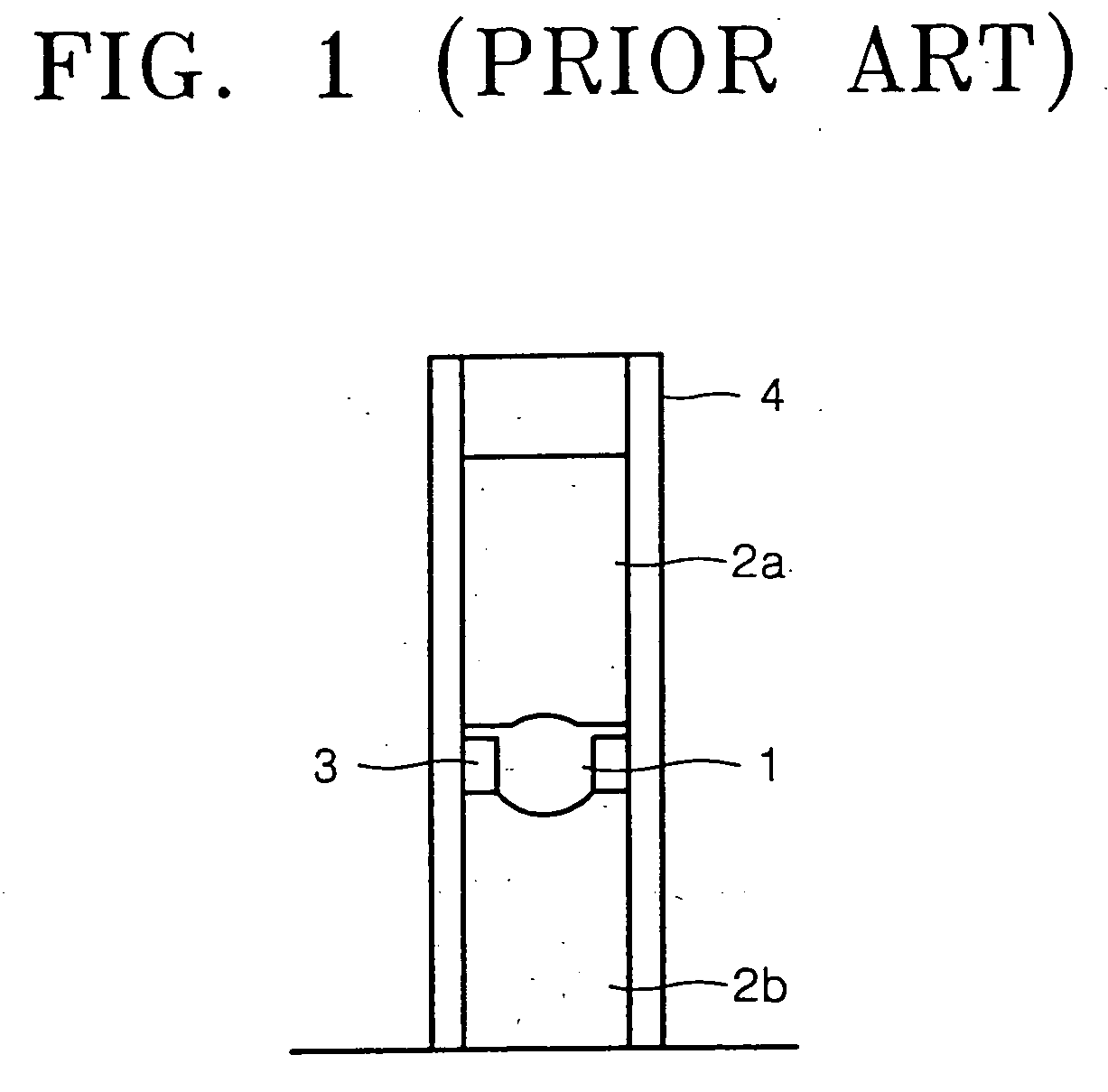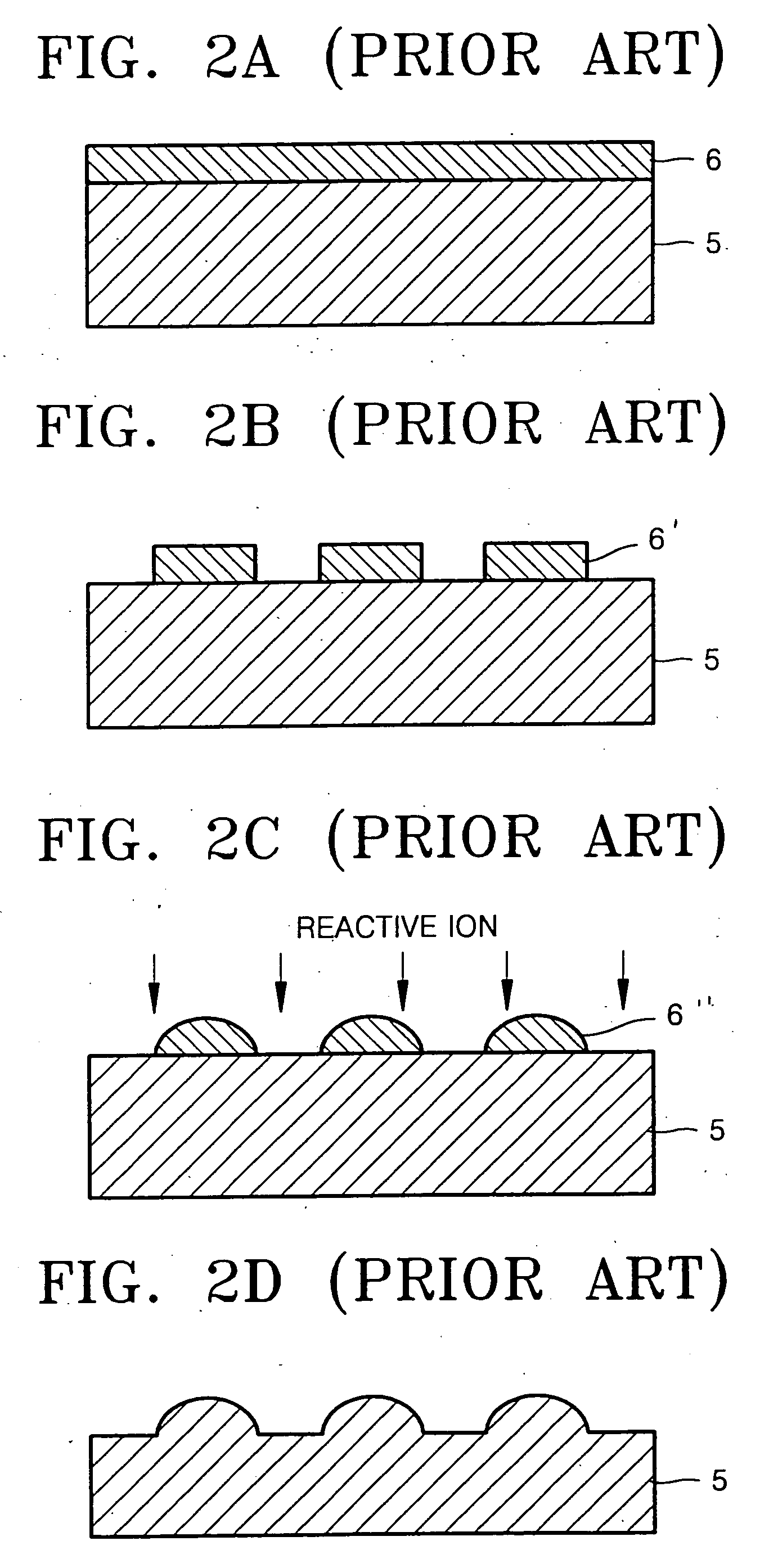Planar lens and method for fabricating the same
a technology of plane lens and concave mold, which is applied in the field of plane lens, can solve the problems of limited concave mold processing method, limited cutting tools and diamond wheel curvature, and difficult to machine concave mold for lenses under 1 millimeter in diameter, and achieves the effects of easy manufacturing, good optical performance, and easy assembly of optical pickups
- Summary
- Abstract
- Description
- Claims
- Application Information
AI Technical Summary
Benefits of technology
Problems solved by technology
Method used
Image
Examples
embodiment 1
of Lens Cavity Formation
[0042] Referring to FIG. 5A, the entire surface of a prepared substrate 12 is coated with photoresist 13 and subjected to light exposure through a mask 14 with a window 14a as a light transmission path. In this embodiment, positive photoresist is used so that a region to be etched is exposed to form the lens cavity 12a therebelow.
[0043] Next, the exposed region of the photoresist 13 is removed through a development process, as shown in FIG. 5B, to expose a cavity region of the substrate 12.
[0044] The exposed cavity region of the substrate 12, which is uncovered with the photoresist 13, is subjected to isotropic dry or wet etching so that the lens cavity 12a with a spherical bottom surface is formed, as shown in FIG. 5C.
[0045] After the remaining photoresist 13 is stripped away, as shown in FIG. 5D, and the process illustrated in FIG. 4C is performed.
embodiment 2
of Lens Cavity Formation
[0046] Referring to FIG. 6A, the entire surface of a prepared substrate 12 is coated with photoresist 13 and subject to light exposure through a gray scale mask 15 with a window 15 whose light transmittance locally varies. In this embodiment, positive photoresist is used so that a region to be etched is exposed to form the lens cavity 12a therebelow.
[0047] Since the window 15a of the gray scale mask 14 used in this embodiment has locally varying light transmittance, the amount of light radiated on the photoresist 13 during the exposure process through the window 15a is not uniform throughout the exposed region. The light transmittance of the window of the gray scale mask 14 needs to be appropriately controlled according to the curvature of a desired spherical or aspheric lens.
[0048] Next, a spherical or aspheric groove 13a is formed in the photoresist 13 through a development process, as shown in FIG. 6B.
[0049] Next, as shown in FIG. 6C, dry etching, for e...
PUM
| Property | Measurement | Unit |
|---|---|---|
| diameter | aaaaa | aaaaa |
| diameter | aaaaa | aaaaa |
| diameter | aaaaa | aaaaa |
Abstract
Description
Claims
Application Information
 Login to View More
Login to View More - R&D
- Intellectual Property
- Life Sciences
- Materials
- Tech Scout
- Unparalleled Data Quality
- Higher Quality Content
- 60% Fewer Hallucinations
Browse by: Latest US Patents, China's latest patents, Technical Efficacy Thesaurus, Application Domain, Technology Topic, Popular Technical Reports.
© 2025 PatSnap. All rights reserved.Legal|Privacy policy|Modern Slavery Act Transparency Statement|Sitemap|About US| Contact US: help@patsnap.com



